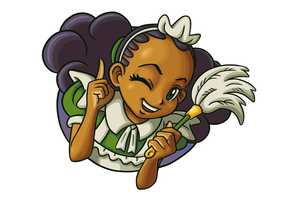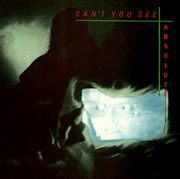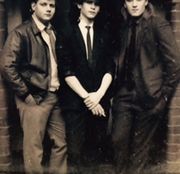Watching You Tonight (partially found Absolute album; 1986-1987): Difference between revisions
DrakeDaigo (talk | contribs) |
DrakeDaigo (talk | contribs) |
||
| Line 23: | Line 23: | ||
Clarke also contributed on the track "At The Third Stroke", giving ideas, including ripping off Depeche Mode's See You bassline for it, but the idea was dropped, and decided to programm a different pattern, however he wasn't credited on the b-side when the single was released. | Clarke also contributed on the track "At The Third Stroke", giving ideas, including ripping off Depeche Mode's See You bassline for it, but the idea was dropped, and decided to programm a different pattern, however he wasn't credited on the b-side when the single was released. | ||
T.V. Glare was recorded in a week at Splendid Studios and released on May 1985 only for Europe. Unfortunately, it was not the hit that Vince or Eric had expected and in spite of extensive radio play, T.V. coverage, and even a bit of national press, the single was only played on BBC Radio 1 around 3 times a day when it was released under Sonet Publishing and Neil Ferris was paid to plug it. | Written by Taf in mid 1984 T.V. Glare was recorded in a week at Splendid Studios and released on May 1985 only for Europe. Unfortunately, it was not the hit that Vince or Eric had expected and in spite of extensive radio play, T.V. coverage, and even a bit of national press, the single was only played on BBC Radio 1 around 3 times a day when it was released under Sonet Publishing and Neil Ferris was paid to plug it. | ||
==Can't You See== | ==Can't You See== | ||
Revision as of 19:49, 28 April 2022
This article has been tagged as Needing work due to its slightly poor wording and lack of references.
Absolute was a synth-pop/electronic music band formed between 1982 and 1983 by John Thomas, Colin Taaffe (Taf) and Paul Johnson, being known for being signees of the infamous "Reset Records" label owned by Vince Clarke (Depeche Mode, Yazoo and Erasure) and his partner in crime and producer Eric Radcliffe, from late 1984 to 1987, releasing two singles "T.V. Glare" in 1985 and "Can't You See" in 1987.
Early Days
Absolute was formed in Edmonton, in North England between late-1982 and mid-1983 when all the members were still in high school. At first, the band consisted of Depeche Mode’s covers that utilized Paul’s synthesizer and John’s Technics organ. Taf and Paul left school in 1984 and got jobs while John stayed in school. By this time, John had purchased a Yamaha DX7 synthesizer and a Korg KPR-77 drum machine and Paul had a Korg Poly-61 and a Korg Micro-Preset. The two began to practice song writing and using their instruments until they felt confident enough to record a demo. They went into a local studio and recorded their first track titled “Face Up". [1]
T.V. Glare
On mid-1984 Taf got in contact with Eric Radcliffe in mid-1984 to record some demos at Splendid Studios. Radcliffe was interested by their sound and Taf’s vocal resemblance to Dave Gahan, thinking how it would be recorded, leading them be signed to the infamous Reset Records label in late 1984.
Reset Records at that time had press coverage by synth magazines for being Vince Clarke's label, but had several unsuccessful releases with Robert Marlow, who released three singles and had an album that was shelved at the time. They had lost their contract and interest from RCA Records and was held by Sonet Publishing and Vogue Distribution in France.
On November 1984, the band recorded two more demos with John Fryer at the controls. Absolute met Vince Clarke, who was one of their heroes. Clarke suggested that "T.V. Glare" would make a good single and that they should meet after Christmas to do the pre-programming at his house in London. The production started later on mid 1985 with the track "The Merry Go-Round", which was featured in the "Electronic Soundmaker" magazine on June 1985.
Clarke also contributed on the track "At The Third Stroke", giving ideas, including ripping off Depeche Mode's See You bassline for it, but the idea was dropped, and decided to programm a different pattern, however he wasn't credited on the b-side when the single was released.
Written by Taf in mid 1984 T.V. Glare was recorded in a week at Splendid Studios and released on May 1985 only for Europe. Unfortunately, it was not the hit that Vince or Eric had expected and in spite of extensive radio play, T.V. coverage, and even a bit of national press, the single was only played on BBC Radio 1 around 3 times a day when it was released under Sonet Publishing and Neil Ferris was paid to plug it.
Can't You See
By late 1985, after working on several projects: releasing one last single with Robert Marlow, a single with Paul Quinn by Mute Records, both resulting in a big flop; Vince Clarke left Reset Records, leaving Eric Radcliffe in charge of the label, by that time, the relationship between Vince and Eric was very strained, and working on Blackwing Studios with no satisfactory results for over two years turned out very depressing, and as Vince had told the band that Erasure, his new project, had not been an instant success, which he was worried about.
Before Vince left he told Eric that the song "Can't You See" was going to be Absolute's next single. On May 1986, Eric Radcliffe gave green light to start recording of the single along with their album, which was produced by John Fryer. John Thomas left in early 1986, but was going to be featured on the album's credits and photoshoots nonetheless.
Nobody was happy with the first finished version of "Can’t You See" which some thought sounded like a rip off of Erasure’s Wonderland LP.
John Fryer was given the job of re-working "Can’t You See" along with completing the band’s upcoming album during winter of 1986, which now featured backing vocals from Karen Dobie, an amateur singer at the time.
"Can't You See" was released in April 1987 only as a 7-inch single. It was a financial failure with no promotion from Sonet or Reset, leading it to be withdrawn from many stores weeks later. Its extremely poor reception lead to confusion back in the late 1990s on whether it existed, but in 1998, it was confirmed that the single was relased but had no promotion thanks to a CD-R bootleg release of a Reset Records compilation and several Vince Clarke forums of the time.
The Lost 12-Inch
Weeks before the release of the 7-inch version of "Can't You See", John Fryer began work along with the band on a 12-inch release. It was mixed in 3 weeks and consisted of a 12 minute mix of "Can't You See" along with the full version of "Love In My Heart", which was a 4 and a half minute piano ballad with Taf on the vocals. However, with the null promotion of the 7-inch release, they saw no point of releasing the 12-inch version, considering it a waste of time and money. Because of this, no vinyls were manufactured and no release was ever materialized.
Watching You Tonight: The Lost Album
After the release of "T.V. Glare", the band made an appeareance on an article of the Electronic Soundmaker & Computer Music issue July 1985, they were interviewed on Splendid Studios describing the recording process the single, the gear used and a bit of background story of the band along with a demonstration of an instrumental track "the Merry-Go-Round".
On several instances of the interview the band claimed that they were working on new tracks given Clarke and Radcliffe gave them a portastudio gear to record ideas for tracks, Paul Johnson declared:
"After getting in touch with Eric and being introduced to Vince we demo'd three songs with Blackwing's engineer Phil. Our ideas go from the Portastudio to demo stage before we present them to Vince and Eric for their opinions, and then we record downstairs in Vince's studio".
however Taf declared he was working on new tracks for a possible upcoming album:
"...I did write a political protest song recently, but you couldn't tell what it was protesting about in particular... And the gadgets give you ideas too — the sounds inspire new songs, but you have to have some idea in the first place or you've got nothing to work on"
Clarke and Radcliffe were in talks about Absolute recording and releasing their own album, which was a risk at the time. The label was struggling and the thought of attempting to release an album was frustrating due to the poor reception of Robert Marlow's releases.
However, Vince had sympathy for the band since he also liked their novelty factor. Absolute played a lot of parts manually, which reminded him of former times with Depeche Mode and gave Absolute a chance to record an album.
In October 1985, the works of promotion for the album started, but production was delayed when Clarke officially announced that he was leaving the label to form Erasure, leaving Eric Radcliffe in charge of running the label along with being Absolute's "manager" since they were only 16.
Production
Finally on May 3rd, 1986 the band, now as a duo, along with producer John Fryer, started the recording sessions at Blackwing Studios.
At the time, the band adquired their own style, thanks to Fryer’s influence, who was working with bands like Nine Inch Nails, Minimal Compact and the 4AD label, leaning to a more experimental style.
The tracks "T.V. Glare" and "The Merry Go-Round" were reworked, giving them an darker sound compared to the early releases produced with Vince. A photoshoot was made on March 18th, 1986 on some buildings nearby Splendid/Blackwing Studios, days before John Thomas left the band.
The production was finished in mid-1987 with 11 tracks recorded that included a few mixes.
Tracklist
- Take Her Away
- Can't You See
- Does Anybody Want Me?
- T.V. Glare
- Club Boys (Also known as "Clubbed Boys")
- Friend Or Enemy
- Love In My Heart
- Only Time Can Tell
- Doofah On 45
- Now You Are Gone
- The Merry Go-Round
Karen Dobie was recruited to do the backing vocals for most of the tracks except "Club Boys", "Love In My Heart", "Now You Are Gone", "Doofah On 45" and "The Merry Go-Round". Also a local guitar player: Stan Leake was also recruited to play on the tracks "Can't You See" and "Friend Or Enemy".
The word "Doofah" was a thing between them. It was an ongoing joke at the time of recording where John and the band would refer to pieces of studio equipment as a "Doofah" because they couldn’t remember the proper name. They would say to John Fryer “running through the doofah over there!" All three of them were sampled saying "Doofah!" on the tracks "Doofah On 45" and "The Merry Go Round".
The album was planned to be titled "The Return Of The Funky Lizard" however, they knew it wasn't going to be allowed by Sonet and they decided to name it "Watching You Tonight" which was T.V. Glare's working title and original name, later Paul Johnson would consider that the "T.V. Glare" name the worst decision, so they tried to fix that calling the album as their first single's working title.
Touring and Deal with EMI
The idea of go touring was toyed in 1986, when Vince Clarke offered the band to be Erasure's support act on their first UK tour dates as they were working on their album, so they started to work on backing tapes (which remained on cassette tapes) for their tour named "Tones For The Tour" and do rehearsals at Blackwing Studios. However, due to Erasure's poor reception at the time, the very first dates were considerably reduced to just college and high school gigs so, the chances of going on tour were scrapped.
Two years later after the production of the album ended, the band asked Eric to finally go on tour, his funds were enough so they started working on new backing tapes and rehearsing on real rehearsal rooms featuring a very young Alison Goldfrapp and Karen Dobie on backing vocals.
Eric said it would be funny to take all the synths from Blackwing for the stage show. So they used a reel to reel machine and a whole lot of synthesizers for the shows, which impressed the audience.
The band went on tour on mid 1987 with approximately twelve gigs around London on big venues like the Camden Palace and the famous London Hippodrome.
The tour was well received by the audience and worth them the interest of Nick Briskey from EMI Records, who offered a deal to sign them if they reworked a song for them, so they accepted.
Eric Radcliffe liked the idea, he was willing to sell the album to EMI, to get some profit back for the production of the single and the album along with Blackwing Studios starting to lose contracts of use and John Fryer was about to take parts with the 4AD label so they accepted.
After the tour ended they went back to Blackwing Studios along with John Fryer to rework "Take Her Away" which was everyone's favorite, producing the infamous "Hi-Tension" mix, going to a House style.
The band didn't like the result at all since it didn't sound to the genre they wanted to go.
They produced a 12-inch mix which was way worse, so EMI broke his deal with Absolute and Reset Records.
RCA Deal and Break-Up
By late 1987 the band met with RCA, which ironically had a distribution deal with Reset from 1983 to late 1984.
They were willing to fund new demos and potentially sign them to release their album, however both Taf and Paul hadn't worked on new material for months, they didn't received any money from their records, and Reset Records' operations ceased on September 1987 with the release of "Can't You See" being a financial failure.
On November 1987, Paul Johnson and Taf during a phone call decided to put an end to Absolute, leaving behind the album which remained unreleased.
Aftermath
After Absolute broke up Paul Johnson got back to school and went out of the music business, just taking it as a hobby, and later work as a high school teacher.
Taf went on several bands and very discrete projects, trying to achieve success with the help of his friends with no luck, being known by people on late 90's, however he had no wish to contact his old Absolute bandmates. His final attempt was on late 2000's being the vocalist of the rock band "Maneki" [2] which was praised by the local press, but split up in 2010, and his aftermath is unknown to date.
John Thomas went back to school and produced albums with local bands on his free time and also working on hardware store projects.
Eric Radcliffe stayed on music business, working on very discrete projects and collaborating one last time with Vince Clarke on Erasure's album "The Innocents" being featured on "Ship Of Fools" b-side in 1988. By late 1990's he retired from music business with his three daughters. in 2008 was featured on the Yazoo documentary for the 25th anniversary of the duo
John Fryer hasn’t stopped producing, which includes several metal albums, but these days he’s also involved with some musical projects of his own.
Availability
Absolute’s history was lost in time and there was no information about the band for quite a while. The band was mentioned several times on interviews with Robert Marlow, who declared never meeting the band while working with Reset, and the story of the band and the existence of the album remained unknown.
In 2017, Paul Johnson, former member of Absolute, posted most of the album and the work done with EMI from late 1987 on Soundcloud. He claimed that he got a copy of the master on a cassette tape in the late 1990s, however the recordings are in bad quality with constant hiss and ringing noise in some of the tracks.
The full version of "Now You Are Gone" along with the "Tones For The Tour" tape and their very first demo remain lost.
As of now, the masters and the master tape of the album are in possession of Eric Radcliffe after clearing up Blackwing Studios before it shut down in 2001 and when Robert Marlow's album masters were needed to be remastered in Sweden and released by Energy Rekords in 1999.
Gallery
External Link
- Paul Johnson's Soundcloud account containing most the album, the lost 12-inch and work made with EMI
References
- ↑ Information provided by Paul Johnson in an e-mail exchange Retrieved 28 May '20
- ↑ Taf's last project known with the band Maneki Retrieved 28 May '20




